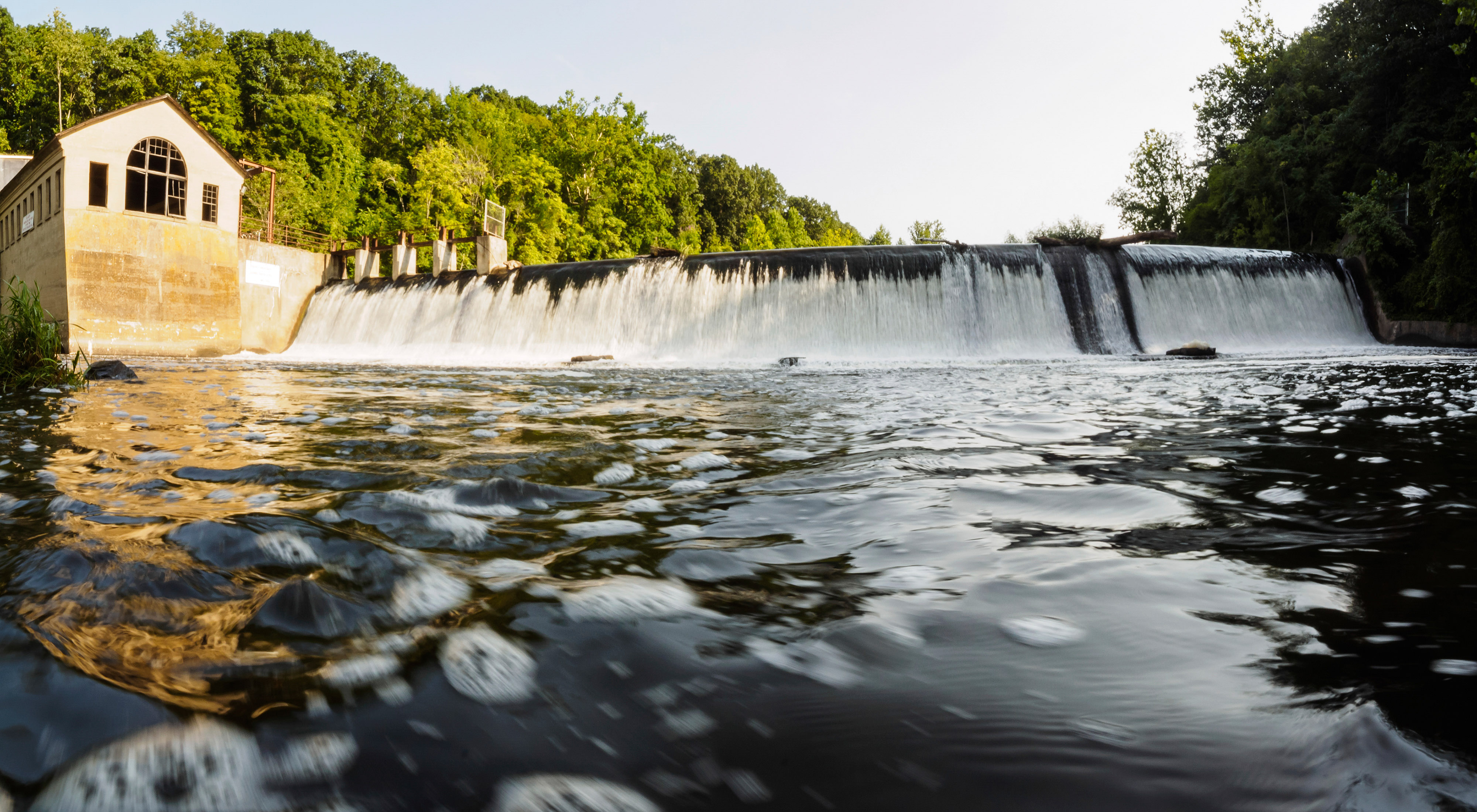On a sunny day in early August, the sound of crisp, rushing water could be heard as it flowed naturally through the Columbia Dam for the first time in 109 years. Kayakers, canoers and outdoor enthusiasts rejoiced that by next summer they would be able to enjoy everything the Delaware River has to offer. It was just one of many reasons to celebrate The Nature Conservancy’s effort to remove the century-old Columbia Dam.
Working with a team of partners, the Conservancy’s plan to remove the 300-foot-long, 18-foot-high structure has been many years in the making. The dam, which is situated near the intersection of the Paulins Kill tributary and the Delaware River, has been degrading water quality and blocking the passage of fish since it was built in the early 1900s. When the structure is completely removed, natural habitat for a variety of fish species and other wildlife will be restored, and water flowing into the Delaware River, a source of drinking water for millions of people in the area, will improve.
“It is a special kind of satisfaction to know that American shad will no longer ‘bump their noses' on the Columbia Dam when they return to spawn, that cleaner water will be entering the Delaware and that people will have an uninterrupted waterway for recreation," said Barbara Brummer, The Nature Conservancy’s New Jersey State Director.
The Columbia Dam was originally constructed for ice harvesting and to supply power to the towns of Columbia, NJ and Stroudsburg, PA. Over time, however, the dam became home to pools of stagnant water, stopped migratory fish from reaching their spawning grounds, and kept people from experiencing full recreational use of the river. The effects were so damaging that it became vital for the dam to be taken down.
In addition to the Conservancy, support and funding for the removal of the dam came from a variety of organizations such as the New Jersey Department of Environmental Protection, The U.S. Department of Agriculture’s Natural Resource Conservation Service, New Jersey Department of Fish and Wildlife, US Fish and Wildlife Service, American Rivers, the U.S. Fish and Wildlife Service Fisheries Program, the Corporate Wetlands Restoration Partnership and the National Fish and Wildlife Foundation.
Additionally, support for the dam removal came from Tom’s of Maine, the leading maker of natural personal care products. With a long-standing commitment to supporting people, communities and the planet, the company’s support of the Columbia Dam removal is vital to the Conservancy’s mission to better protect, preserve and restore the nation’s freshwater.
Every year, Tom’s of Maine donates a portion of its profits to conserve nature for future generations. The company has been giving 10% of its profits for decades and has supported hundreds of nonprofits, including The Nature Conservancy. Tom’s of Maine’s support for the Columbia Dam is part of a larger contribution of $1 million to the Conservancy to support water restoration projects.

On-the-ground work on the Columbia Dam began in summer 2018 and progressed quickly. On August 3, the first notch, a cut thirty feet wide, was made in the structure. The Conservancy, partners, community members and engineers with heavy equipment are removing the dam completely and restoring the natural riverscape, a process that will take several months.
What about the clean power generation lost by the deconstruction of the dam? Even that challenge is being creatively solved. The Conservancy designed a plan at the nearby Pequest Fish Hatchery to use solar panels to exceed the power generated by the dam, while also acting as barriers to birds spreading disease among the young trout. The New Jersey Division of Fish and Wildlife has the project out to bid.
Taking out the dam and restoring the natural river habitat will result in a domino effect of benefits for shad, trout and other wildlife, and for people, who will have cleaner drinking water and enhanced hiking, fishing, and paddling access—without losing a single watt of clean energy generation.
The Columbia Dam is not an anomaly. Across the Northeast, more than 14,000 dams have been identified as high priority for removal. The Conservancy is working with partners to eliminate many of these antiquated structures and restore local waterways and habitats to natural balance.

